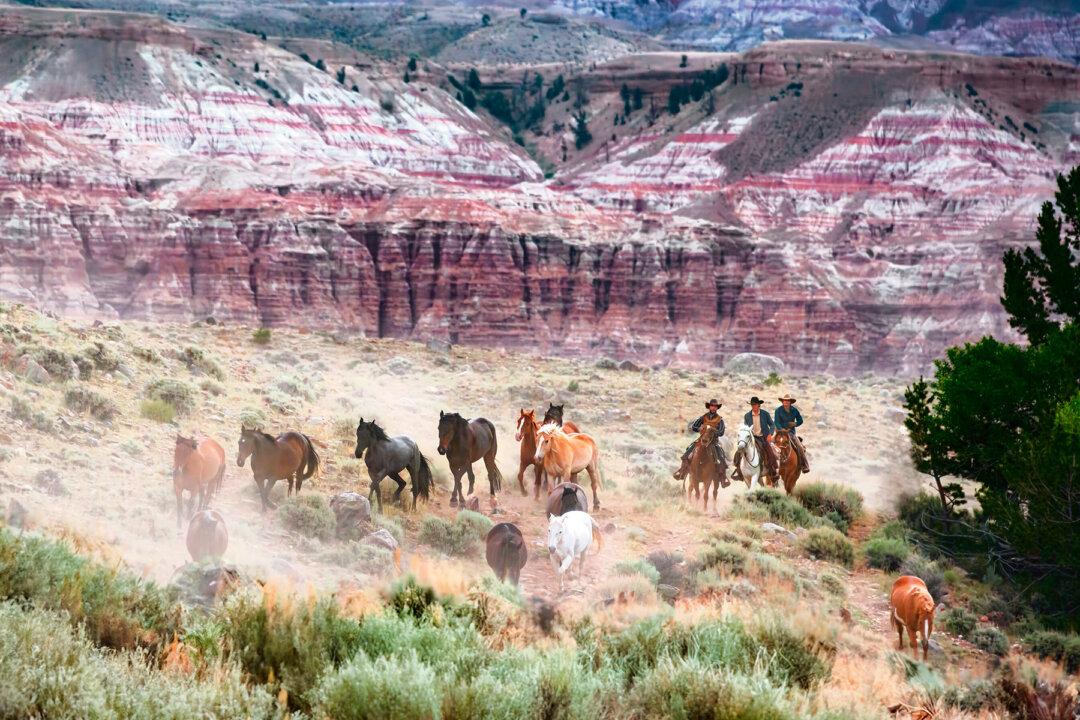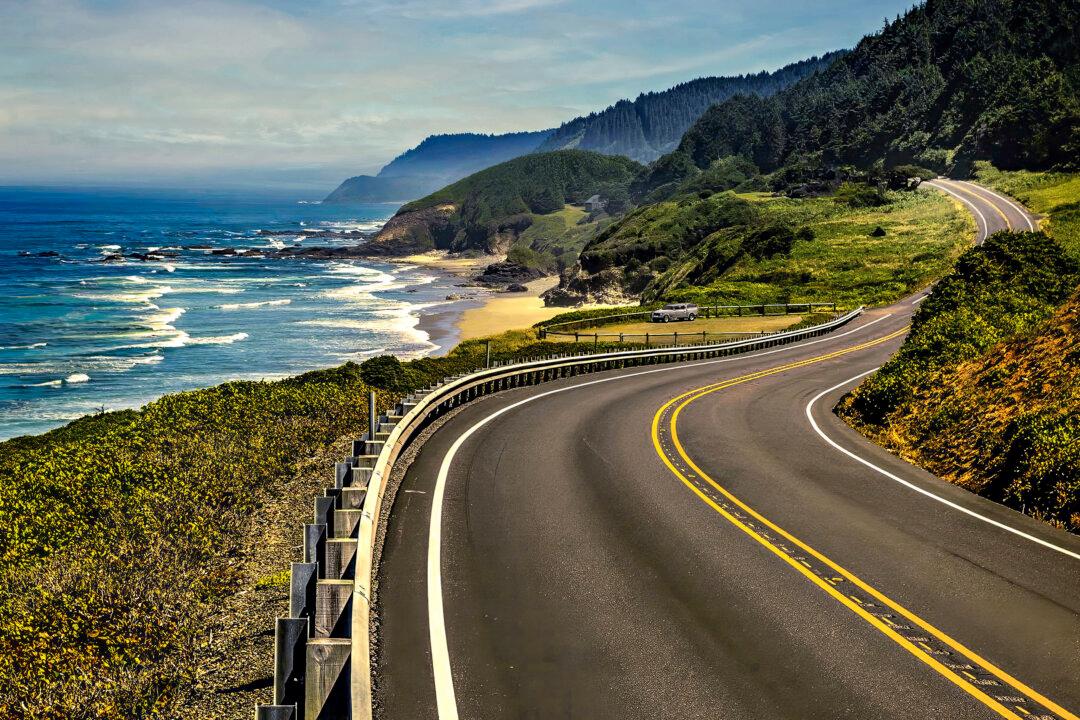Dashing down to the wharf at the foot of Market Street in San Francisco, during the height of a gold strike in 1879, you board a ferry for a two-day journey to a remote and hardscrabble boomtown among inhospitable hills just east of the Sierra Nevada. The side-wheeler steams across San Francisco Bay on a brilliant autumn afternoon before arriving at the Central Pacific Railroad terminal in Vallejo.
Stepping from the gangway, you board the Nevada-bound Lightning Express that chugs through the Central Valley and across the Sierras. Shortly before sunrise in Reno, you transfer to the Virginia and Truckee Railroad to Carson City, where you hop onto the morning stage that lurches past the statehouse.
The coach bounces and jolts its way along the Esmeralda toll road and at twilight pushes into uninhabited wasteland. At daybreak, you find yourself among sagebrush and pinion pines in forlorn Aurora. The nearly deserted county seat was a spirited gold and silver mining town in the early 1860s that attracted the likes of Samuel Clemens shortly before his days reporting for the Territorial Enterprise in Virginia City, where he adopted the pen name Mark Twain.
Flanked by arid hills, the stage makes its way to your final destination, Bodie, California, a ghost town situated amid a windswept and treeless terrain. “Gold is where you find it” speaks to the desolate location at 8,379 feet elevation—the last pioneer mining camp in California.

Perilous Prospects
In the fall of 1859, a quartet of prospectors discovered gold in a gulch near what would become Bodie. Ill-equipped for winter’s bitter cold and heavy snow, they made a pact to secrecy and agreed to return in the spring. Poughkeepsie, New York, native Bill Bodey and half-Cherokee “Black” Taylor double-crossed their partners and pieced together a makeshift cabin.Returning from a supply trip during which they were caught in an early blizzard, Bodey froze to death. Taylor, who would later be decapitated by hostile Paiutes, found his body the following spring stripped by hungry coyotes. Two decades later, an awakened interest in the camp namesake—if not the correct spelling—led to his proper burial in an unmarked grave overgrown with sagebrush.

The gilded promise didn’t pan out for most prospectors, who instead of striking it rich in the gold fields, worked for wages in the gold mines. Author and adventurer J. Ross Browne visited a Bodie mine in 1863 and wrote about his experience:
“I had barely descended a few steps when the massive planks and rafters were thrown across overhead, and thus all exit to the outer world was cut off. I scrambled down the rickety ladders till the last rung seemed to have disappeared.
“‘Come on, Sir,’ cried the voice of Jensen far below. ‘They’re going to blast!’ Pleasant, if not picturesque, to be hanging by two hands and one leg to a ladder, squirming about in search of a foothold, while somebody below was setting fire to a fuse.
Bona Fide Bonanza
Bodie transformed from desolate diggings into a bona fide bonanza when a rich vein of gold ore was discovered in 1875. Over the next five years, the mining district expanded, suddenly boasting 30 mines and nine stamp mills. The population swelled to about 7,500 in a town of 450 businesses, with four times as many houses. Many of them were insulated in desperation with newspapers against the long severe winters, with temperatures of minus 40 degrees and incessant wind and snow that whistled through the cracks in the shoddy structures.
Roughly 5 percent of the buildings remain today from the town’s 1877–1881 high noon. Some give the appearance that their occupants left suddenly, dropping whatever they were doing. Under layers of dust and amid dishevelment, you see cards and chips left from an abandoned poker game, store shelves stocked with goods, and schoolbooks open on desks.

Bodie Foundation President Benny Romero and yours truly recently rode side-by-side to the squealing delight of busloads of school children, who, upon seeing a couple of cowboys on horseback, may have imagined the ghost town had come back to life. The Bodie Foundation is a nonprofit dedicated to the preservation of California’s official Gold Rush ghost town.
Gold Miners, Gamblers, and Gunslingers
Bodie residents were bearded miners wearing faded red flannel shirts and smudged, heavy black boots, trudging up to the mines and mills swinging their lunch buckets at the start of their 12-hour shifts. They were investors and retailers, blacksmiths and boilermakers, carpenters and bartenders, housewives and coquettes, doctors and lawyers.“The life seemed to hold a peculiar fascination for cultured people of the romantic type,” observed a 14-year-old telegraph messenger in 1879, as recorded in historical archives.
They were dapper gamblers spiffed up in sharp tailored suits and embroidered vests on the prowl for a promising card game; they were reckless and loathsome gunslingers who concealed their hardware beneath black swallow-tailed coats and caroused in the Main Street saloons and “Virgin Alley” brothels. Shootouts at the poker tables in the 65 watering holes were wagered to be as common as a busted flush.

Pizzazzy Petticoats
Prostitutes were as much a part of mining camps as picks and shovels. Eleanor Dumont was one of legions of ladies of pizzazzy petticoats and pecuniary persuasion who came to a sad end. A petite French girl with bright black eyes, coiffured curls, and a musical voice, she burst onto the San Francisco gambling scene with the Gold Rush in 1849 and was a schooled blackjack dealer when she set a dainty foot in the mining frontier five years later. Her exotic beauty and cool competence awed men, who treated her with respect.Dumont followed gold strikes through seven Western states for a quarter century and when the chips were down, turned to prostitution. Over time, a thin strip of facial hair appeared above her lip, and she was mocked with the moniker “Madame Moustache.” When in 1879 she took up residence in a Bodie bordello and set up a table in the Magnolia Saloon, a local reporter reckoned, “Probably no woman on the Coast is better known.” A year later, after losing a borrowed $300 at cards, she snuck away and died after swallowing a mixture of morphine and claret in the outskirts of town.

Taoist Temple and Tough Teamsters
With several hundred residents, Chinatown was a miniature of those found in Sacramento and San Francisco in its impoverished immigrants’ exotic culture and wafting aroma of Oriental spices. Flimsy shacks interspersed with imposing mercantiles and a Taoist temple hemmed in narrow King Street. Conspicuous opium dens didn’t conceal men and women lying on bunks smoking the narcotic while others sat around a table playing faro or fan-tan.Traffic on the congested mile-long Main Street ranged from 20-mule-team freight wagons driven by hard-bitten teamsters to spanking horse-drawn carriages driven by highfalutin mine superintendents. Stagecoaches tore into town carrying gold seekers and rushed out carrying gold bullion, guarded by stern men with sawed-off shotguns.

Wickedest in the West
The town gained national notoriety as the “Wickedest Town in the West,” epitomized by the infamous “Bad Man from Bodie,” as described in an article that appeared in the Oct. 16, 1880, issue of the Sacramento Bee.The archetype was described thusly: “A ‘Bad Man from Bodie’ who never uses profanity is as impossible as perpetual motion or an honest election in Nevada ... The short sharp yelp of his Derringer will send the echoes flying, and the people of the camp smile grimly and rub their palms. The undertaker dusts off his gorgeous death wagon. The coroner gets ready his jury lists for the inquests. The gravedigger buys a new spade, and the man whose job is epitaphs on imperishable marble lays in a stock of new chisels.”
In an oft-cited 1879 diary entry, a little girl who was about to depart for Bodie with her family described gathering her dolls so they might join her as she knelt by her bed to say her prayers, which she concluded with a somber, “Goodbye, God; we are going to Bodie.” Mark Twain mused that in Bodie, virtue versus vice made for exciting times, and he’d have it no other way.

Jumpin’ Jubilee
For the Fourth of July jubilee, Bodie’s businesses were decorated with American flags, festoons of bunting, and evergreens attached to street posts. The Grand Parade ran three blocks and featured members of fraternal orders in full regalia, as well as veterans of the Mexican War and Civil War. They were accompanied by brass bands and drum corps playing along the line of march. A float was adorned with young girls in starched white frocks, waving banners of the states of the union.The afternoon would be given over to contests such as potato and sack races for the children, and hard rock drilling and tug-of-war for the miners. Out on Booker Flat, celebrants cheered Bodie’s baseball team and bet their wages on the horse races. In the evening, fireworks went off—to the delight of the overflow crowd and under the watchful eyes of the four volunteer fire brigades.
The Grand Ball followed at the Miners Union Hall, with ladies who dressed in fashionable evening gowns, slipped on kid gloves, and fluttered fancy fans. The elaborate program included lots of dancing: square dancing, waltzes, and polkas. At midnight, a sumptuous banquet was held at one of the hotels, most notably the lavish Grand Central that served such delicacies as fresh oysters on a half shell imported on ice from San Francisco.

The fleeting fanfare belonged to a bygone era. In 1892, a fire consumed Bodie’s business district. The town never seriously recovered despite its construction of the first hydraulic power plant and transmission line in the world that year. In 1915, the Saturday Evening Post claimed there were only “a few old men” living there—the actual number was closer to 700. A 1932 inferno ignited most of what remained of the mining camp. By mid-century, Bodie was a ghost town.





